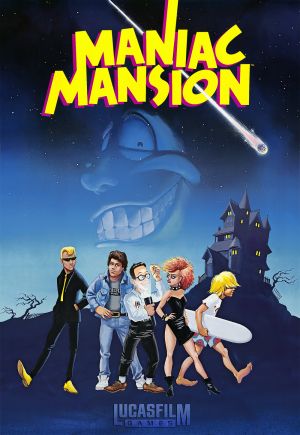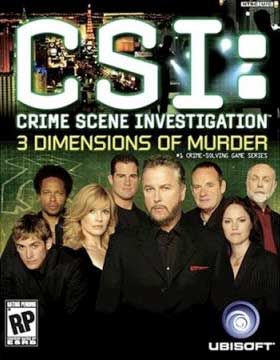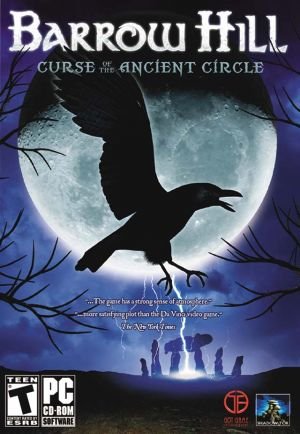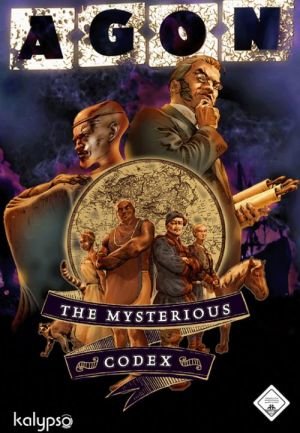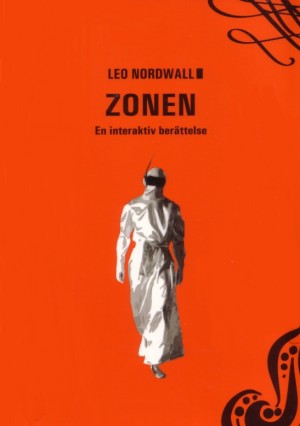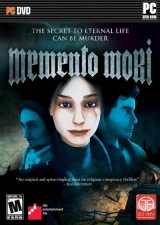Review for Slip Space: The Burma-Shave Analogy

It’s hard to compare what amounts to one man’s five-year labour of love, with hours of obvious passion invested in it, to a slick, commercially-produced adventure game. Some may feel that this level of dedication should automatically give an independent project a certain cachet, but in a very competitive market, such games still need to earn their stripes the old-fashioned way. Several indies have managed to do just that, as there have been some quality games created over the years. The latest entry in the field of homegrown adventures is Dan Markosian’s Slip Space: The Burma-Shave Analogy, but unfortunately this sci-fi adventure lacks much of the polish displayed even by many of its indie contemporaries. Ultimately, however, this game’s appeal will primarily be based on how much you like puzzles, because this adventure has lots and lots of them.
It’s not simple to explain what Slip Space is about, as its story quickly deteriorates into a bunch of metaphysical mumbo jumbo, most of which is told through voiceovers. The voice work often works against the player by using multiple accents intended to give the discourse some flavour, but often simply makes them hard to comprehend correctly. In certain cutscenes, snippets of dialogue echo over each other, making the lines even harder to hear. I often found myself straining to catch what was being said and repeating certain sequences in the vain hope of understanding what was going on.The designer really should have just played it straight and had the actors speak plainly, or at the very least included a full subtitle option.
The weak voice work is compounded by the fact that so much of the dialogue is suffused with hard-to-understand principles regarding slip space theories and how they relate to an advertising concept from the 1930s called the Burma-Shave experiment. For the uninitiated, the real-world Burma-Shave company pioneered the use of breaking messages down into small fragments that were put on road signs spaced some distance from each other along a highway. You’d read the first one, drive a little further and read the next, which continues the narrative begun with the first. Slipstreams, on the other hand, have to do with moving through time and space in a way that I imagine must be similar to wormholes. This, I am sure, is a topic of interest to Trekkers and science geeks, but will confuse the hell out of many gamers. It took me quite a while just to see how the game was trying to connect two such disparate topics.
The long and short of the story, as I eventually pieced it together, is that you have been implanted with a device that allows you to work as an agent for the Strategic Intelligence Alliance. The S.I.A. have given you a mission to find a man named Webster, who has five sons. To complete this mission, you are sent to a building called the Golden Age of Advertising at the beginning of the game. This building is really a transporter that sends you… somewhere else. Slip Space never really says where you are. I think it’s just assumed that you are in a slipstream, a place that exists outside of normal space and time. In this ‘place’, you find a number of huts that you can access as you solve puzzles. Each hut transports you to another piece of slip space with more huts. Every once and a while, you get a message from the S.I.A., which starts to become more of an annoyance than a boon, as they tend to ramble about vague concepts that lead nowhere. The gist is: you are lost and they can’t find you.
And lost is how I felt through most of this game. To begin with, the introduction goes on forever. I was confused about when it stopped, or if it had stopped, and ended up restarting the game twice because I was sure I had missed a cue somewhere. This absence of clear direction is a continuing problem throughout the game: the lack of some sort of sign that you are on the right track, have solved a puzzle, or succeeded in completing a task. The cues, if there are any to indicate an achievement, are either too subtle to be discernible or are not consistently applied. Often I thought I had done everything right to solve a puzzle, but had no idea if that was the case. Sometimes only by wandering around more did I discover I had succeeded in my efforts.
In fact, there needs to be more context around the puzzles overall, as you end up blindly clicking around trying to discern what’s going on. There are wild jumps in supposition and latent assumptions that the player is going to understand what to do next. And while the fact that Slip Space is incredibly non-linear is something many adventure gamers might appreciate, it can hugely bog you down when you can’t logically figure out your next course of action. Since there are no noises or evident visual clues to help you along your way, and with most of the storyline so convoluted that it does very little to point you in the right direction, the very few hints woven into the environment make it easy to lose your way. While it’s often overused in other similar games, the presence of books or diaries would have been most welcome here to provide some much-needed background and guidance.
The game’s many puzzles pretty evenly fit into three main types. Those based on math in some form are not my strongest suit, like a particular wheel puzzle where you have to figure out some fairly complex numerical derivatives. The next set usually require matching colours in some way, such as linking lasers or recreating a series of coloured beams. The final group of puzzles are your basic push-button / pull-gear challenges, where you just need to figure out the correct order. Most of these puzzles are standalone activities, rarely making use of information picked up at other points in the game. Some, like the wheel puzzle, are real head-scratchers; others like a stacking ball puzzle at the beginning of the game are pretty simple. Overall, the issue isn’t so much that the puzzles are difficult, but that you often have so little to go on to solve them, which makes them seem artificially challenging.
Unfortunately, there is almost no relationship between the puzzles and the story, either. With no justification for their presence, the puzzles seem to exist solely as hurdles to overcome before allowing the player to move through a hut to the next level. Nor are the environments themselves thematically woven into the narrative, like a barren moon or a sand-covered plain, or even the industrial planet you visit first, which merely offers a backdrop suitable for covering in mechanical devices that need buttons pushed, gears pulled, and number tricks solved. Its look and design have nothing to do with the plot, the man you are looking for, or any of his five sons. It’s just a convenient holding place for a lot of puzzles.
Slip Space’s graphics are a combination of photos and computer generated images, none of which are really eye-catching, instead looking rather dated and blurry. While the technical limitations might be understandable from an indie production, almost all the game’s environments are visually cluttered with different textures from rocks to rusted metal to foliage. The cutscenes also have a jagged quality that can be hard on the eyes, and often suffer from severe pixelation, making the details very hard to discern. There is a very limited soundtrack included, along with some ambient sounds and sci-fi effects. The music is strictly for ambient atmosphere, however, as it’s so subtle I didn’t even notice it for the first two hours I played.
The game’s first-person interface is simple, but works well overall. You move node-to-node by clicking directional cursors; most of the time you can only turn left or right, but from time to time you are able to look up and down. Like most point-and-click games, you left-click hotspots to perform actions, but there is no inventory gathering to be done, and no one to interact with. You are just a lonely traveller crisscrossing whatever world you are on, trying to figure out what to do next. Some of the walking is eliminated by the use of transporters that hop you from one place to another, and this does help you get around faster. My only complaint is that I would have liked more than a single slot to save games, as I often wished to jump back to previous points in the game to reset puzzles or start a task again with a different approach, or just to return to a familiar setting whenever I got lost.
It took me about 20 hours to reach the end, though much of that was spent exploring aimlessly, so the amount of gameplay is going to vary widely between players. But while the play time is generous and it is impressive to see what one person can create, ultimately it’s impossible to recommend the game to anyone but hardcore puzzle lovers, preferably with a love of theoretical science. Available only at the official website (along with a demo to try out), Slip Space: The Burma-Shave Analogy is chock full of puzzles, and for that reason alone will hold a huge appeal for that type of gamer, but will likely come off as confusing and disjointed to most others. The graphics simply don’t hold up to many games currently on the market, and the voice work is substandard. The storyline could almost not exist for the impact it adds to the game, failing even to cohesively tie the puzzles and the environment together. Even with all these concerns, however, hopefully this game will be a stepping stone from a designer who improves with experience, because puzzle-intensive games are scarce these days, and it’s great to see the indies still carrying the mantle, even if this debut slips a little too much in the process.


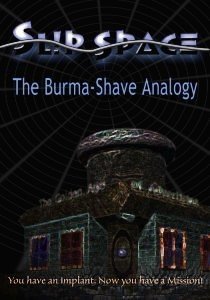
_capsule_fog__medium.png)






